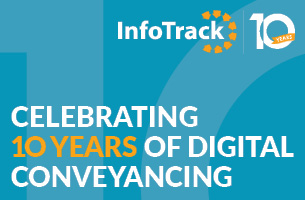By Jason McQuillen and Martin Brenig-Jones
For part one, click here
How to process map
Process maps can take a number of different forms and, depending on complexity, involve numerous sub-processes. Commonly used forms include swimlane diagrams, value stream maps, organisational process structures and the more comprehensive ‘SIPOC’ models (which details the interplay between Suppliers, Inputs, Process steps, Outputs and Customers).
Regardless of the type of map deployed (and it is usually beneficial to deploy more than one), it is important to start by mapping the current contract process, ‘warts and all’. As tempting as it is to sketch out the ideal state, it is vital to understand the current state and set the baseline to get the most out of the exercise.
Getting off a blank page
One popular method used by Lean Six Sigma (LSS) practitioners to get off a blank page and start to understand the current state is called ‘process stapling’. To do this, simply imagine yourself being stapled to the thing that goes through the process and follow it each step all the way through to the end.
In the context of producing and reviewing commercial contracts, the first major step in the process is likely to be intake; how, and by whom, is the legal team instructed? For many legal departments, the form of instructions varies wildly depending on who is leading the deal for the company, which may be a contract from the sales, procurement or other business team.
Does the legal team receive all of the instructions it needs to begin the process in one fell swoop, or are the background and business requirements relayed over a series of disjointed calls and e-mails attaching out-dated or incomplete documentation? After the matter has landed in the legal department, how is the work triaged so that it is undertaken by the right level of resource?
Next, examine how the work gets done. Likely sub-processes include:
- Selecting the correct contract template / playbook and completing the first draft;
- Marking-up and negotiating the terms (multiple drafts);
- Capturing and escalating outstanding issues; and
- Proofing the final wording and tidying the contract.
When the content and wording or the contract are settled, there will likely by further sub-processes including:
- Internal approvals, signature and exchange of executed versions;
- Extraction of contract data for management reporting; and
- Uploading the contract to contract management system and related administrative efforts (such as filing related e-mails)
Each of these steps must be documented.
Focusing on value
Once you have mapped out the steps in your current process, turn your focus to the qualitative aspects of those steps. Which actually add value? As stated earlier, this is typically only 10-15% of steps, and these may represent as little as 1% of the total process time (taking into account delays and the time where the product or service is static).
LSS practitioners use various acronyms to remember the categories of waste in a process, such as ‘TIM WOODS’ or ‘DOWNTIME’. In the context of production and review of contracts, waste may commonly include:
- Transport: movement of contract parts between stakeholders (eg, for input or approval);
- Inventory: WIP and completing contract parts ahead of time;
- Motion: looking for information (eg, due to a poor contract management system or contract template library);
- Waiting: waiting for stakeholder inputs and approvals;
- Over-production: too much volume and detail beyond that required;
- Over-processing: too many turns of the contract and double checking;
- Defects: use of inappropriate contract template, unclear drafting or invalid sign-off; and
- Skills: using senior lawyers when talented juniors (or non-lawyers) could deliver to requirements.
It is not the case that every step in a process that is does not add value should be automatically deemed to be ‘waste’ and discarded. There will be some steps which, although not value add according to the strict LSS definition, are nevertheless essential. This may be for regulatory, policy, health and safety, or similar reasons. For these steps, consider if they can be moved to a separate process, or at least how to complete them in the most efficient way.
Remember that it is the customer’s perception of value that is important. Will the customer care (or even notice) if a step is undertaken by a different resource, is automated, or is removed altogether?
Getting the most from your map
Process mapping will often draw out areas of ambiguity and misunderstandings around handoffs and dependencies between various business functions and stakeholders. For example:
- When is the legal team involved in drafting the services description and service levels?
- Is it the responsibility of the legal team or the business team to obtain necessary approvals from the IT security team?
- Who is accountable for getting the contract signed?
Use your better understanding of the process to not only remove waste, but also to build more transparent and sustainable working relationships. It may be useful to develop a RACI chart (outlining roles and responsibilities) to sit alongside the new process.
The process map can also serve as a data point for making investment decisions aimed at minimising defects and improving overall quality. For example, should the legal department be spending more on its contract template library, both in terms of content and accessibility?
Final word
Process mapping is one tool in the LSS toolkit for process improvement. Its power lies in the benefit for the user in having a visual depiction of a process, end to end. Whilst individual steps may seem sensible on their own, this holistic view quickly demonstrates how waste, rework and unnecessary movement can so easily creep into any process over time, resulting in inefficiency and unnecessary cost as well as increasing the likelihood of defects.
In the production and review of commercial contracts, a process in which quality of output and quick turnaround are at the heart of client needs, it seems only too right that Lean Six Sigma methodologies and process mapping is now ‘on the map’.
Jason McQuillen is head of managed legal services at Radiant Law and a commercial law specialist, and Martin Brenig-Jones is a director at Catalyst Consulting, an expert in Lean Six Sigma, and co-author of Lean Six Sigma for Dummies














Leave a Comment